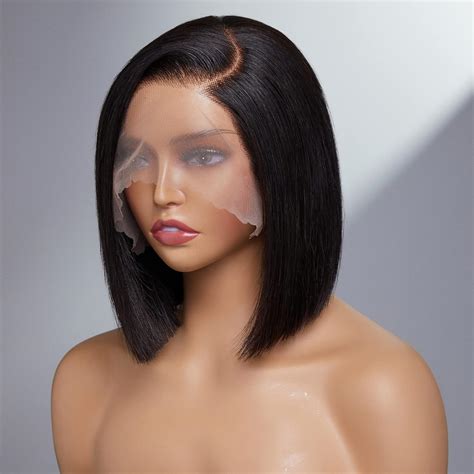Introduction

The wig and half-wig market has witnessed remarkable growth in recent years, driven by increasing demand for versatile hair solutions that cater to diverse needs. According to a report by Allied Market Research, the global wig and hair extension market was valued at USD 13.7 billion in 2020 and is projected to reach USD 27.3 billion by 2030, exhibiting a CAGR of 7.6%. This surge is attributed to factors such as rising disposable income, shifting fashion trends, and advancements in hair technology.
Applications of Wigs & Half Wigs
Wigs and half wigs offer a myriad of applications, including:
- Hair Loss Solutions: For individuals facing hair loss due to medical conditions, chemotherapy, or alopecia, wigs provide a natural-looking and comfortable solution to restore appearance.
- Fashion Statements: Wigs and half wigs allow users to experiment with different hair colors, styles, and lengths, enabling them to make bold fashion statements.
- Convenience: Half wigs, such as topper wigs, provide a quick and easy way to add volume or cover up thinning areas without the commitment of a full wig.
- Special Occasions: Wigs are often used for special events such as weddings, proms, and Halloween, offering versatility and the freedom to transform one’s look in a memorable way.
- Protective Hairstyles: Wigs can serve as a protective layer for natural hair, preventing damage from heat styling or color treatments.
Types of Wigs
Full Wigs:
- Lace Wigs: Constructed with a delicate lace base that mimics the scalp, providing a realistic and breathable fit.
- Synthetic Wigs: Made from heat-resistant synthetic fibers, offering low maintenance and a wide range of colors and styles.
- Human Hair Wigs: Crafted from 100% human hair, known for their natural appearance, durability, and styling versatility.
Half Wigs:
- Topper Wigs: Designed to cover the crown of the head, adding volume and concealing thinning areas.
- Halo Wigs: Resemble a headband with hair attached, providing instant volume and coverage without the need for glue or clips.
- Clip-In Wigs: Attached to natural hair using small clips, allowing for flexibility and quick application.
Factors to Consider When Choosing a Wig or Half Wig
- Hair Type and Texture: Determine if you prefer human hair or synthetic fibers, and choose a texture that matches your own hair.
- Hair Length and Density: Consider the desired length and fullness of your wig or half wig.
- Cap Size: Measure your head circumference to ensure a comfortable and secure fit.
- Face Shape: Certain wig styles can complement different face shapes, so choose one that enhances your features.
- Budget: Set a budget and research options that align with your financial constraints.
Benefits of Wigs & Half Wigs
- Enhanced Self-Esteem: Wigs and half wigs can boost self-confidence by restoring a fuller, more attractive appearance.
- Versatility and Experimentation: They offer endless possibilities for changing hair color, style, and length without damaging natural hair.
- Time-Saving: Wigs and half wigs can be applied quickly and easily, saving time spent on styling and maintenance.
- Hair Protection: They can safeguard natural hair from environmental factors, styling tools, and chemical treatments.
- Convenience: Wigs and half wigs provide a convenient way to cover up bad hair days or experiment with new looks without the commitment of a permanent change.
Maintenance of Wigs & Half Wigs
- Regular Washing: Wash your wig or half wig with cold water and a mild shampoo specifically designed for wigs.
- Conditioning: Use a wig conditioner to maintain moisture and prevent tangles.
- Styling: Avoid heat styling as it can damage the wig fibers. Use a wig brush to gently style and remove tangles.
- Drying: Air-dry your wig or half wig on a wig stand to prevent damage from heat.
- Storage: Store your wig or half wig in a cool, dry place away from direct sunlight.
Table 1: Types of Wigs and Their Features
| Wig Type | Cap Construction | Key Features |
|---|---|---|
| Lace Wig | Lace base | Natural appearance, breathable, versatile |
| Synthetic Wig | Heat-resistant fibers | Low maintenance, affordable, variety of styles |
| Human Hair Wig | Human hair | Natural appearance, durable, styling flexibility |
Table 2: Factors to Consider When Choosing a Wig or Half Wig
| Factor | Considerations |
|---|---|
| Hair Type and Texture | Human hair or synthetic fibers, texture matching |
| Hair Length and Density | Desired length and fullness |
| Cap Size | Head circumference measurement for a comfortable fit |
| Face Shape | Wig style to complement facial features |
| Budget | Financial constraints and budget setting |
Table 3: Benefits of Wigs and Half Wigs
| Benefit | Description |
|---|---|
| Enhanced Self-Esteem | Boosted confidence from a fuller, more attractive appearance |
| Versatility and Experimentation | Endless possibilities for hair color, style, and length changes |
| Time-Saving | Quick and easy application, saving styling and maintenance time |
| Hair Protection | Safeguarding natural hair from environmental factors and treatments |
| Convenience | Convenient way to cover up bad hair days or try new looks |
Table 4: Maintenance Guidelines for Wigs and Half Wigs
| Task | Instructions |
|---|---|
| Washing | Cold water, mild wig shampoo |
| Conditioning | Moisturizing wig conditioner |
| Styling | Gently brush, avoid heat styling |
| Drying | Air-dry on a wig stand |
| Storage | Cool, dry place away from sunlight |
